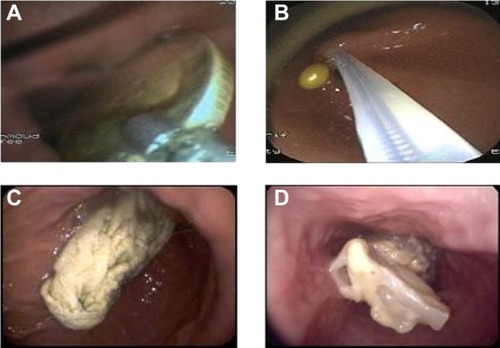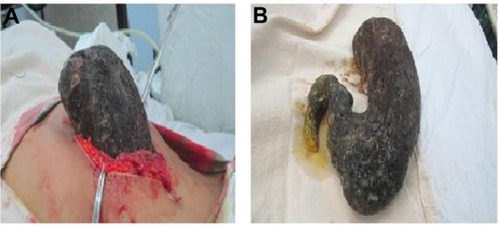Figures & data
Table 1 Characteristics and presentations of patients
Figure 1 Examples of foreign bodies.

Table 2 Types of trapped foreign bodies
Figure 3 X-ray was used to localize the foreign body (coin; arrow) in some cases (A), and computed tomography (B) was used to describe the huge gastric bezoar (arrow) in the case of a mentally disabled patient.

Table 3 Site of trapped foreign bodies
Table 4 Treatment outcomes

